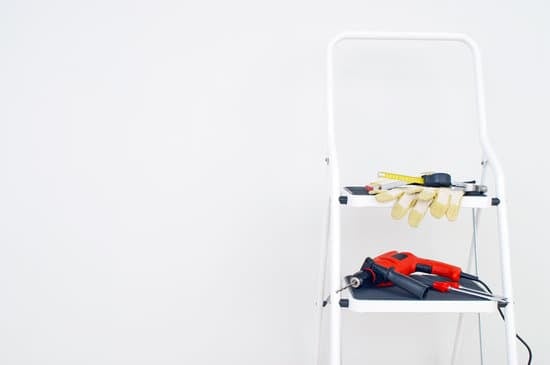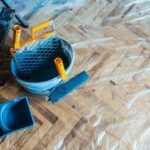Can you add home improvements into your mortgage to save money and streamline the renovation process? Adding home improvements to your mortgage can offer several benefits, such as lower interest rates and the ability to finance larger projects. In this article, we will explore the process of adding home improvements to your mortgage, the pros and cons, types of home improvements you can add, and how to determine if it’s right for you.
Adding home improvements to your mortgage involves including the cost of renovations in your home loan. This can be a convenient option for homeowners who want to make significant upgrades or repairs without having to take out a separate loan. With the potential for lower interest rates and one monthly payment, it’s no wonder that many homeowners are considering this option.
In the following sections, we will provide a step-by-step guide on how to add home improvements to your mortgage, discuss the different types of renovations you can finance through your mortgage, and offer tips for getting the best deal. We will also delve into common mistakes to avoid and explore alternative financing options for home improvements.
By the end of this article, you will have a better understanding of whether adding home improvements to your mortgage is the right choice for you.
The Process of Adding Home Improvements to Your Mortgage
The first step in adding home improvements to your mortgage is to determine the cost of the renovations. Once you have a clear idea of the total expenses, you can begin researching lenders who offer renovation loans or refinancing options that include funding for home improvements. It is essential to compare different loan products and choose one that best suits your financial situation and goals.
After selecting a suitable lender, you will need to provide detailed plans and cost estimates for the renovations. The lender may require an appraisal of your property to assess its current value and the anticipated value after the improvements are completed. Once the lender approves your application and the loan amount, you can start the renovation process with the funds from your mortgage.
Before deciding whether to add home improvements to your mortgage, it is important to consider both the pros and cons. While this financing option can provide tax benefits and potentially increase the value of your property, it also means taking on additional debt and paying interest over time. Carefully evaluating these factors will help you determine if adding home improvements to your mortgage is the right choice for you.
| Step | Description |
|---|---|
| Determine Renovation Cost | Research lenders and loan products |
| Provide Detailed Plans | Appraisal of Property |
| Lender Approval | Consider Pros and Cons |
Pros and Cons of Adding Home Improvements to Your Mortgage
Adding home improvements to your mortgage can be a great option for homeowners looking to make substantial changes to their property without having to pay for everything upfront. However, it’s important to weigh the pros and cons before making this decision.
One of the main benefits of adding home improvements to your mortgage is that it allows you to finance the cost of the renovations over a longer period, typically 15-30 years. This can make it more affordable for homeowners, as they can spread out the payments over time. Additionally, mortgage interest rates tend to be lower than other forms of financing, so you may end up paying less in interest over the life of the loan.
On the other hand, there are also some disadvantages to consider. By adding home improvements to your mortgage, you are essentially increasing the amount of debt secured by your home. This means that if you’re unable to keep up with the mortgage payments, you could risk losing your home through foreclosure. Additionally, not all lenders offer this option, so it may limit your choices when it comes to selecting a lender for your mortgage.
It’s important to carefully consider your financial situation and long-term goals before deciding whether or not to add home improvements to your mortgage. Taking on additional debt should always be done with caution and only after thorough consideration of all the potential risks and benefits.
Types of Home Improvements You Can Add to Your Mortgage
When considering adding home improvements to your mortgage, it’s important to understand the types of renovations and upgrades that are eligible for inclusion. Here are some common home improvements that can be added to your mortgage:
Kitchen Renovations
Upgrading your kitchen can significantly increase the value of your home. This may include replacing countertops, cabinets, appliances, or even a complete overhaul of the layout. Adding these costs to your mortgage can be a smart financial move if it leads to a higher resale value.
Bathroom Upgrades
Similar to kitchen renovations, upgrading bathrooms is a popular choice for homeowners looking to add value to their property. This may involve installing new fixtures, tiling, cabinetry, or expanding the size of the bathroom.
Energy-Efficient Improvements
Investing in energy-efficient upgrades such as solar panels, modern HVAC systems, or insulated windows and doors not only reduce utility costs but also add value to your home. These improvements
Room Additions or Extensions
Expanding the square footage of your home by adding new rooms or extending existing ones is another option for financing through your mortgage. This could include adding a new bedroom, creating a sunroom, or expanding the living space in other areas of the house.
Understanding which types of home improvements are eligible for inclusion in your mortgage is an essential step in making informed decisions about enhancing your property’s value through financing options.
How to Determine if Adding Home Improvements to Your Mortgage Is Right for You
Adding home improvements to your mortgage can be a great way to finance renovations and upgrades to your home. However, it’s important to carefully consider whether this option is the right decision for you. Here are some factors to consider when determining if adding home improvements to your mortgage is the best choice:
1. Current Mortgage Terms: Consider the terms of your current mortgage, including interest rates and remaining balance. Determine if adding home improvements will result in a more favorable overall financial situation.
2. Cost of Home Improvements: Calculate the total cost of the improvements you want to make and compare it to your available financing options. Determine if adding the costs to your mortgage is a financially feasible option for you.
3. Long-Term Plans: Evaluate your long-term plans for the property. If you plan to stay in the home for many years, adding improvements to your mortgage can be a beneficial investment. On the other hand, if you plan to sell in the near future, you may want to explore other financing options.
4. Equity Considerations: Consider how adding home improvements may increase the equity in your home. This can be an important factor in determining if this financing option is right for you.
Before deciding whether or not to add home improvements into your mortgage, carefully evaluate these factors and consult with a financial advisor or mortgage specialist who can provide personalized guidance based on your individual circumstances. Making an informed decision is crucial when considering this option.
Tips for Getting the Best Deal When Adding Home Improvements to Your Mortgage
When looking to add home improvements to your mortgage, it is essential to ensure that you are getting the best deal possible. This means doing thorough research and carefully considering your options before making any decisions. Here are some tips for getting the best deal when adding home improvements to your mortgage:
First, it is important to shop around and compare different lenders and mortgage products. Different lenders may offer different terms and rates for adding home improvements to your mortgage, so taking the time to explore your options can ultimately save you money in the long run.
Additionally, be sure to review your credit report and score before applying for a mortgage with added home improvement costs. A higher credit score can result in better interest rates and terms, so take steps to improve your credit if necessary before attempting to add home improvements to your mortgage.
Finally, consider working with a mortgage broker who can help you navigate the process of adding home improvements to your mortgage. A broker can provide valuable expertise and guidance, potentially helping you secure a better deal than if you were to go it alone.
| Tips for Getting the Best Deal | When Adding Home Improvements to Your Mortgage |
|---|---|
| Shop around and compare different lenders | Exploring different options can save money |
| Review your credit report and score | Higher credit score can result in better terms |
| Consider working with a mortgage broker | A broker can provide valuable expertise and guidance |
Common Mistakes to Avoid When Adding Home Improvements to Your Mortgage
When considering adding home improvements to your mortgage, it is important to avoid common mistakes that could potentially cost you in the long run. One common mistake to avoid is not properly estimating the costs of the home improvements. It is crucial to have a clear understanding of how much the improvements will cost before adding them to your mortgage. Failing to accurately estimate the costs can lead to financial strain and unexpected expenses down the line.
Another mistake to avoid when adding home improvements to your mortgage is not researching and comparing different financing options. While adding the improvements to your mortgage may seem like the most convenient option, it may not always be the most cost-effective. It is important to explore and compare alternative financing options such as personal loans or home equity loans to ensure that you are getting the best deal for your specific situation.
Additionally, one should be wary of over-improving their home when adding improvements to their mortgage. While it’s natural to want to make significant upgrades, over-improving can result in spending more money than what you can recoup through increased property value. It’s essential to carefully consider which improvements will add the most value while also fitting within your budget.
Overall, by avoiding these common mistakes and thoroughly researching your options, you can ensure that adding home improvements to your mortgage is a decision that aligns with your financial goals and needs.
Alternative Financing Options for Home Improvements
When considering home improvements, exploring alternative financing options can provide flexibility and affordability. While adding home improvements to your mortgage is a popular choice, it’s important to consider other options that may better fit your financial situation.
Home Equity Line of Credit (HELOC)
A HELOC allows homeowners to borrow against the equity in their home. This revolving line of credit can be used for various expenses, including home improvements. The interest rates are typically lower than other forms of credit, and you only pay interest on the amount you borrow.
Personal Loans
For smaller home improvement projects, a personal loan can be a viable option. These loans are unsecured, meaning they don’t require collateral such as your home. Personal loans also offer fixed interest rates and predictable monthly payments, making it easier to budget for your project.
Government Grants and Programs
Depending on where you live, there may be government grants or programs available to help fund energy-efficient or sustainable home improvements. These incentives can significantly reduce the out-of-pocket costs of your project while also benefiting the environment.
Exploring these alternative financing options
Conclusion
In conclusion, adding home improvements to your mortgage can be a strategic financial move for homeowners. This process allows you to finance renovations or upgrades to your property without the need for additional high-interest loans or credit cards. By incorporating these costs into your mortgage, you have the potential to improve both the value and functionality of your home while maintaining manageable monthly payments.
Before deciding whether to add home improvements to your mortgage, it’s important to carefully consider the pros and cons. While this option provides the convenience of spreading out payments over the life of your mortgage, it also means taking on additional debt and potentially paying more in interest over time. It’s crucial to weigh these factors against potential increases in home value and personal enjoyment from the improvements.
Ultimately, determining if adding home improvements to your mortgage is right for you will depend on your individual financial situation, long-term goals for your property, and current market conditions. By thoroughly researching the process, understanding the types of improvements that can be included, and exploring alternative financing options, you can make an informed decision that aligns with your specific needs and priorities.
Frequently Asked Questions
Can I Increase My Mortgage for Home Improvements?
Yes, it is possible to increase your mortgage for home improvements. One way to do this is through a cash-out refinance, where you refinance your existing mortgage for a higher amount and use the extra funds for renovations.
Can You Add Home Renovations to Mortgage?
Yes, it is possible to add home renovations to your mortgage. This can be done through a renovation loan or by refinancing your current mortgage for a higher amount to cover the cost of the renovations.
Can You Add Renovation Costs to FHA Mortgage?
Yes, you can add renovation costs to an FHA mortgage. One option is the FHA 203(k) loan, which allows borrowers to finance both the purchase of a home and the cost of repairs or renovations into one loan.

I’m thrilled to have you here as a part of the Remodeling Top community. This is where my journey as an architect and remodeling enthusiast intersects with your passion for transforming houses into dream homes.





